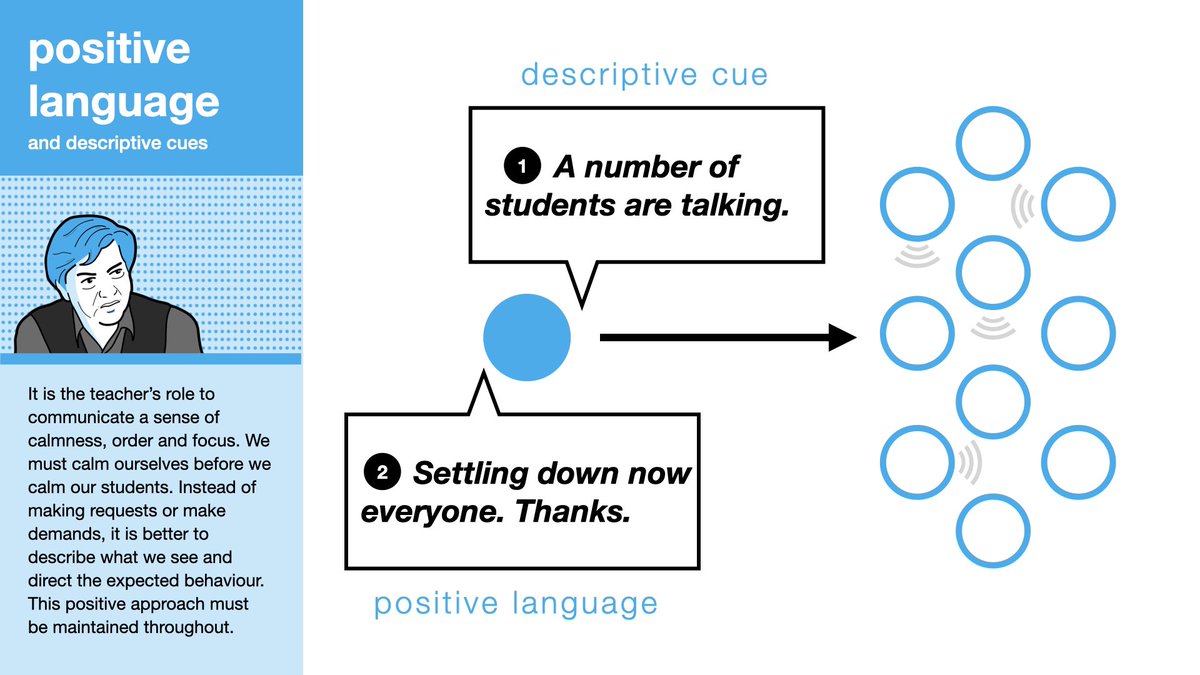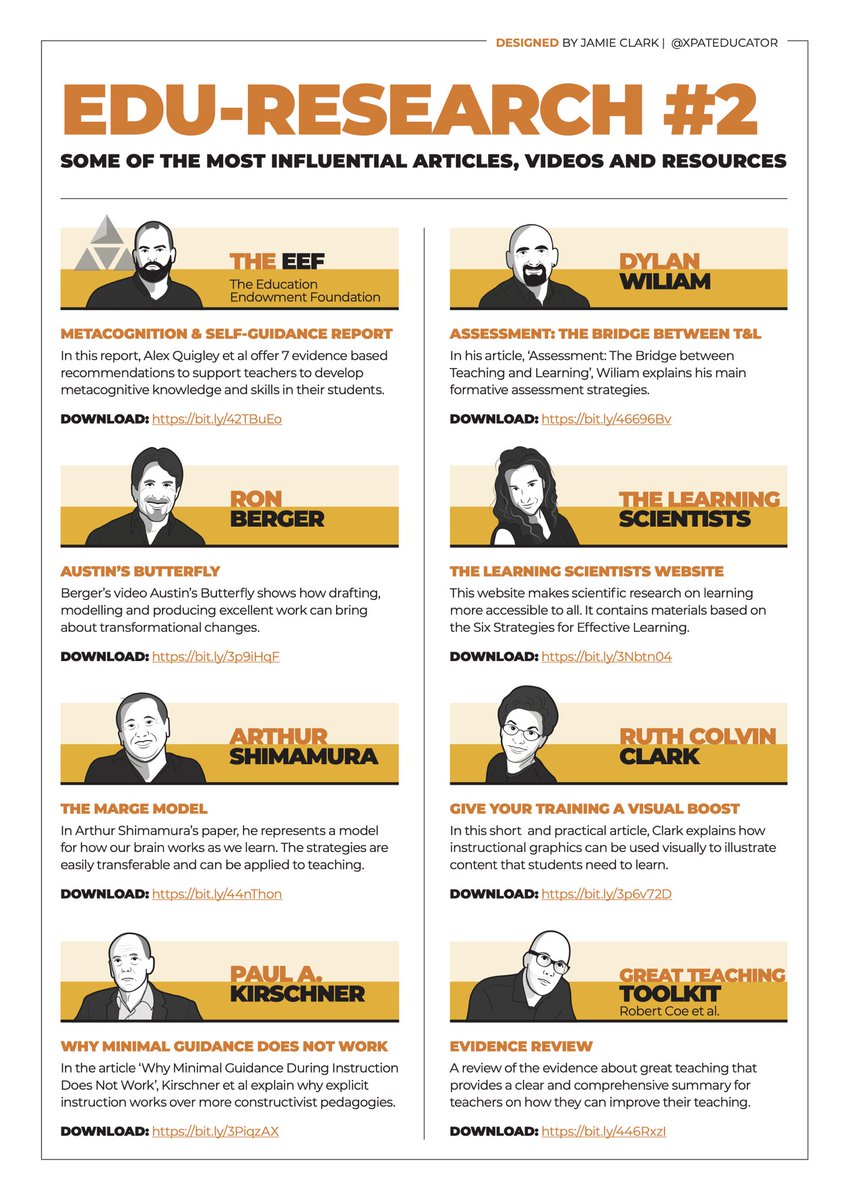BEHAVIOUR MANAGEMENT
🧵 In this thread, I have summarised some of Dr Bill Rogers’ top behaviour management techniques. Each tip is supported with an old-school video… 📼
“You establish what you establish”
🧵 In this thread, I have summarised some of Dr Bill Rogers’ top behaviour management techniques. Each tip is supported with an old-school video… 📼
“You establish what you establish”

POSITIVE LANGUAGE
Communicate calmness & focus. Instead, of making demands or requests, describe what you see: “A number of students are talking.” Give confident & respectful directions to cue in expected behaviour: “settling down everyone. Thanks.”
📼
Communicate calmness & focus. Instead, of making demands or requests, describe what you see: “A number of students are talking.” Give confident & respectful directions to cue in expected behaviour: “settling down everyone. Thanks.”
📼

FOCUS ON PRIMARY BEHAVIOUR
Walk the room & settle small groups before the lesson. Keep intrusiveness & confrontation low. Always focus on the primary issue & do not over service secondary behaviours (eye-rolling, muttering). Address rudeness briefly.
📼
Walk the room & settle small groups before the lesson. Keep intrusiveness & confrontation low. Always focus on the primary issue & do not over service secondary behaviours (eye-rolling, muttering). Address rudeness briefly.
📼

TACTICAL IGNORING
Consciously ignore secondary — often non verbal — behaviours (sighing, eye rolling) that students exhibit on receipt of teacher correction. It helps to keep the focus on the flow of the lesson, or on acknowledging good behaviour.
📼
Consciously ignore secondary — often non verbal — behaviours (sighing, eye rolling) that students exhibit on receipt of teacher correction. It helps to keep the focus on the flow of the lesson, or on acknowledging good behaviour.
📼

DIRECTED CHOICE
During on-task activities, students may be doing the wrong thing (phone, ear phones in). Make consequences clear & leave responsibility with them using directed choice: “I want you to put your phone in your bag or put it on my desk.”
📼
During on-task activities, students may be doing the wrong thing (phone, ear phones in). Make consequences clear & leave responsibility with them using directed choice: “I want you to put your phone in your bag or put it on my desk.”
📼

PARTIAL AGREEMENT
Partial agreement is a tactic that gets you back to the primary issue without being led into conflict. Partially agreeing with students diffuses potential arguments: “Maybe you weren’t taking but now I want you to finish the task.”
📼
Partial agreement is a tactic that gets you back to the primary issue without being led into conflict. Partially agreeing with students diffuses potential arguments: “Maybe you weren’t taking but now I want you to finish the task.”
📼

TAKE UP TIME
It is important to give students time to respond to the teacher’s instruction. Take up time allows for face saving & building cooperation. The teacher might deliberately move or look away after saying, “Omar, come to my desk please.”
📼
It is important to give students time to respond to the teacher’s instruction. Take up time allows for face saving & building cooperation. The teacher might deliberately move or look away after saying, “Omar, come to my desk please.”
📼

FOLLOW UP CONVERSATIONS
Tune into students’ feelings & hear them out. Focus should only be their misbehaviour. Model the misbehaviour to them (with permission) & refer them back to the school’s student behaviour agreement. Always separate amicably.
📼
Tune into students’ feelings & hear them out. Focus should only be their misbehaviour. Model the misbehaviour to them (with permission) & refer them back to the school’s student behaviour agreement. Always separate amicably.
📼

📥 For convenience, you can download the graphics and videos from this thread in a single PDF.
dropbox.com/s/s4hrxv9grjp8…
dropbox.com/s/s4hrxv9grjp8…

Thanks for the great response to this thread. I’ve recently re-listened to @ollie_lovell ERRR podcast episode with Dr. Bill Rogers… it’s an absolutely brilliant interview. Check it out! 👏
podcasts.apple.com/au/podcast/edu…
📝 Show Notes: ollielovell.com/errr/billroger…
podcasts.apple.com/au/podcast/edu…
📝 Show Notes: ollielovell.com/errr/billroger…
• • •
Missing some Tweet in this thread? You can try to
force a refresh













